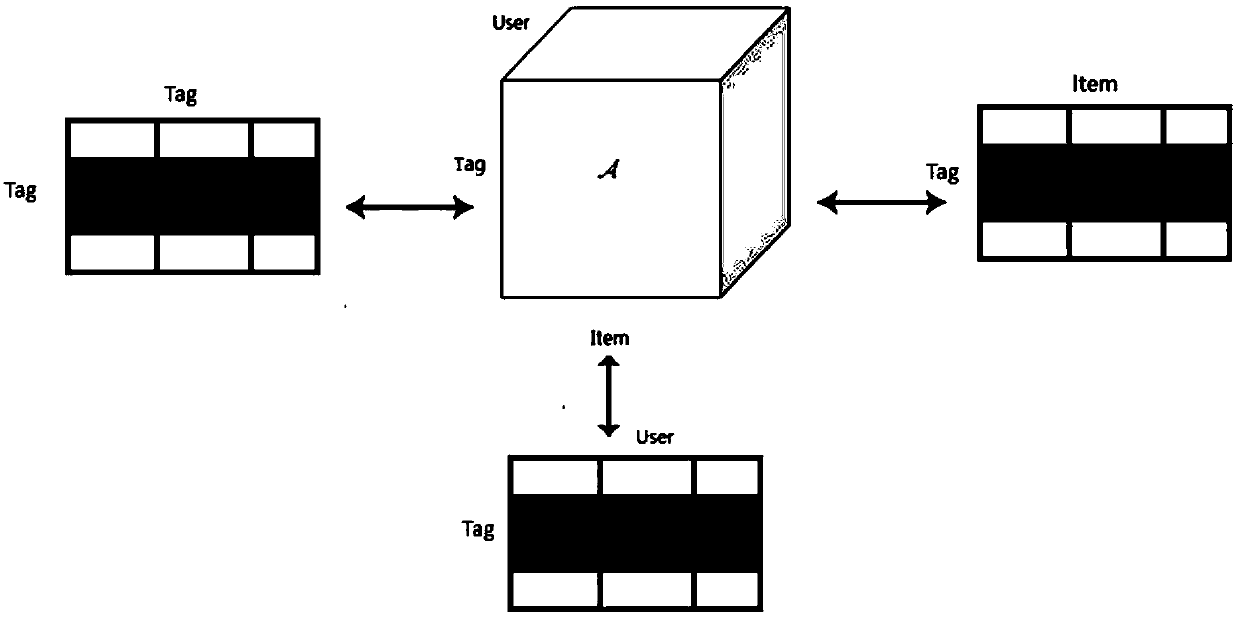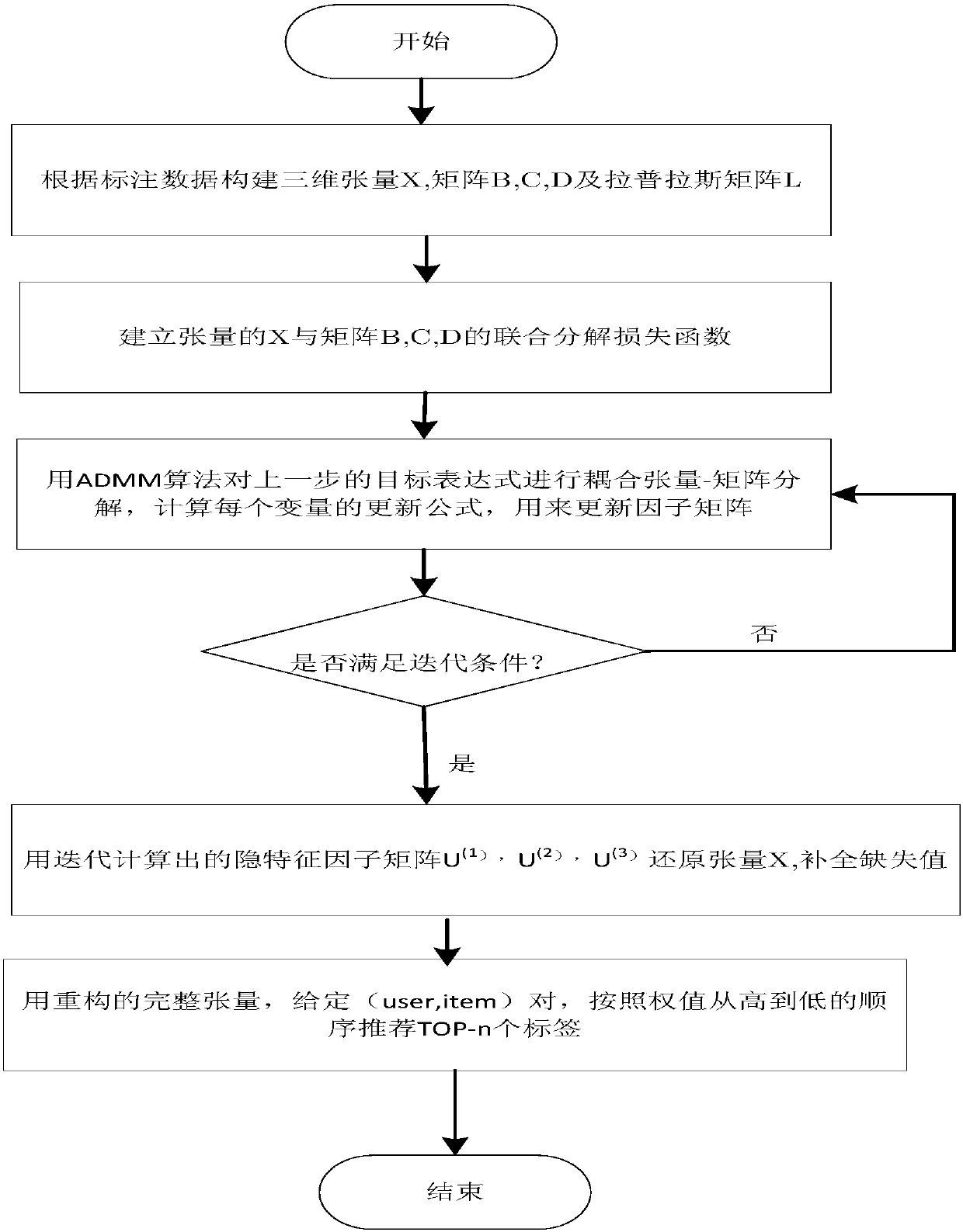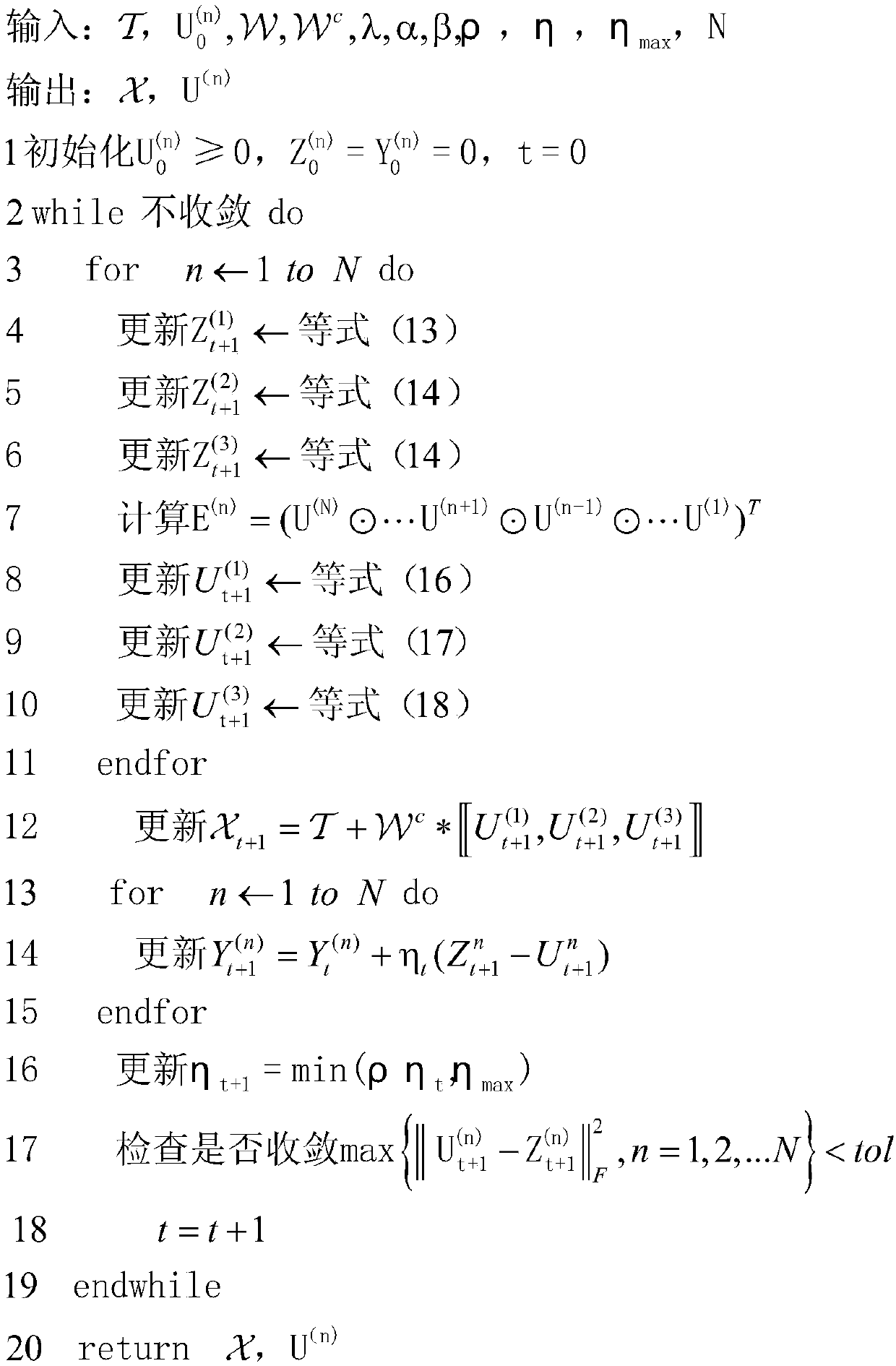Tag recommendation method capable of fusing multi-information-source coupling tensor decomposition
A technology of tensor decomposition and multiple information sources, applied in the field of computer network labeling, can solve problems such as overfitting, data sparseness, and failure to consider the use of tag-resource and tag-user heterogeneous auxiliary information
- Summary
- Abstract
- Description
- Claims
- Application Information
AI Technical Summary
Problems solved by technology
Method used
Image
Examples
Embodiment Construction
[0079] The present invention will be further described below in conjunction with the accompanying drawings.
[0080] Such as Figure 1-2 As shown, a label recommendation method that integrates multi-information source coupling tensor decomposition, the specific steps are as follows:
[0081] Step1: Construct the label similarity matrix B based on the linear integration of two similarity measures of label co-occurrence and semantic correlation;
[0082] If two resources have been labeled similarly, then the two resources are likely to have similar latent feature vectors, so the coupled tensor-matrix factorization process can be regularized by the label information.
[0083] Step1.1 Calculate the label co-occurrence similarity:
[0084] assuming t i and t j is the two labels in the label similarity matrix B data set, then the measurement method of co-occurrence similarity between them is shown in formula 1:
[0085]
[0086] |t i ∩t j | means t i and t j The number o...
PUM
 Login to View More
Login to View More Abstract
Description
Claims
Application Information
 Login to View More
Login to View More - R&D
- Intellectual Property
- Life Sciences
- Materials
- Tech Scout
- Unparalleled Data Quality
- Higher Quality Content
- 60% Fewer Hallucinations
Browse by: Latest US Patents, China's latest patents, Technical Efficacy Thesaurus, Application Domain, Technology Topic, Popular Technical Reports.
© 2025 PatSnap. All rights reserved.Legal|Privacy policy|Modern Slavery Act Transparency Statement|Sitemap|About US| Contact US: help@patsnap.com



